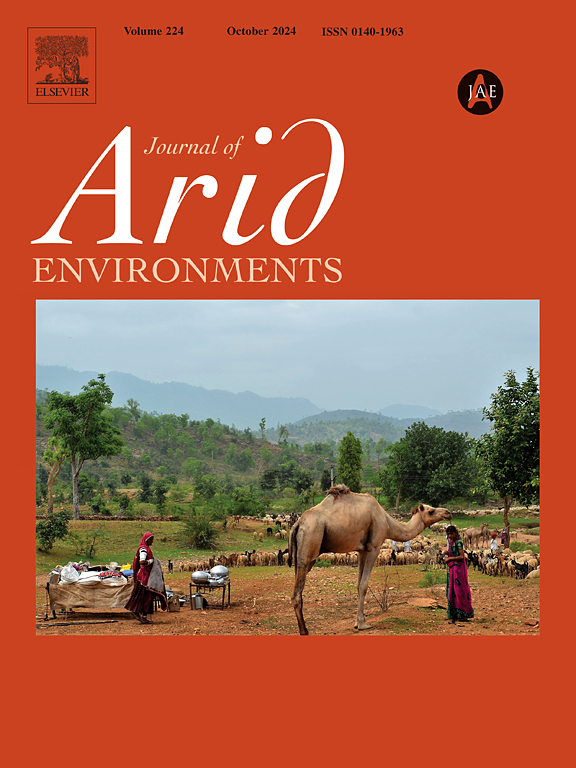UV-B radiation and shrub canopy effects on surface litter decomposition in a shrub-invaded dry grassland
2018-10-01 null null 157(卷), null(期), (null页)
Background & Aims: We assessed the joint role of shrub cover and UV-B on decomposition in a Sonoran Desert grassland. UV is considered an important driver of biogeochemistry in arid grasslands and shrub proliferation in these landscapes can alter both abiotic and biotic drivers of biogeochemistry. Methods: We manipulated ambient solar UV-B exposure of Prosopis velutina leaf litter under and away from shrub canopies and assessed decomposition responses over 320 days. Results: Leaf litter mass declined 40% during the first 50 days, but only an additional 10% during the remaining 270 days. Decomposition was slower under shrubs, where ground temperatures and total solar radiation were lower than locations away from shrubs. However, the presence/absence of UV-B radiation had no detectable influence on mass loss either under or away from shrubs. UV-B exposure decreased N immobilization suggesting UV-B photodegradation is facilitating microbial access to litter N. Conclusions: Higher decomposition of litter away from shrubs may reflect a combination of greater rates of thermal degradation and photodegradation. While UV-B did not directly influence decomposition rates, exposure may alter litter nutrient dynamics. Our study suggests landscape-scale decomposition could decline with increases in woody plant canopy cover owing to shrub-driven changes in microclimate.
相关推荐
- Scaling from microsite to landscape to resolve litter decomposition dynamics in globally extensive drylands [2018-10-01]
- Comparing the Predictive Capacity of Allometric Models in Estimating Grass Biomass in a Desert Grassland [2018-10-01]
- A micrometeorological flux perspective on brush management in a shrub-encroached Sonoran Desert grassland [2018-10-01]
- Long-term research catchments to investigate shrub encroachment in the Sonoran and Chihuahuan deserts: Santa Rita and Jornada experimental ranges [2018-10-01]
- Competition suppresses shrubs during early, but not late, stages of arid grassland-shrubland state transition [2018-10-01]



